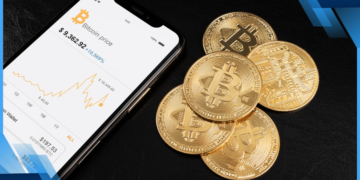ETFs Australia: How to Diversify Your Investments Easily on the ASX

In recent years, ETFs in Australia have become a go-to choice for everyday investors looking for a low-cost, diversified way to build their portfolios. But what exactly are ETFs, and why are they attracting so much attention?
Exchange-Traded Funds (ETFs) are investment funds that are traded on a stock exchange, much like individual shares. They typically aim to replicate the performance of a specific index, sector, commodity, or asset class. By purchasing a single ETF unit, investors can gain exposure to dozens or even hundreds of underlying assets — spreading risk without having to buy each asset individually.
Whether you’re new to investing or looking to simplify your strategy, ETFs can serve as a foundational piece of a well-balanced portfolio.
How ETFs Work: The Basics
ETFs pool together funds from multiple investors and use that capital to purchase a basket of assets. These assets could include:
- Shares from the ASX 200
- International stocks
- Government or corporate bonds
- Commodities like gold or oil
- Sector-specific assets (e.g., healthcare, technology)
The value of the ETF reflects the performance of these combined holdings. Because they are listed on the Australian Securities Exchange (ASX), you can buy and sell ETFs during normal trading hours using a brokerage account — just like with regular shares.
Key Benefits of Investing in ETFs for Australians
There are several advantages to choosing ETFs over individual stocks or managed funds, especially for Australians managing tight or modest household budgets:
Diversification
With one ETF, you can spread your investment across multiple sectors or regions, reducing the impact of poor performance in any one area.
Low Fees
ETFs typically have lower management expense ratios (MERs) than traditional managed funds because they are mostly passively managed.
Liquidity
You can buy or sell ETFs at any time the stock market is open, unlike some investment products that require a waiting period.
Transparency
Most ETFs publish their holdings daily, so you always know what you’re investing in.
Common Types of ETFs Available on the ASX
The Australian market offers a wide variety of ETF options. Here’s a snapshot of popular ASX ETFs categorised by asset class:
How Australians Can Start Investing in ETFs
Getting started with ETFs is straightforward, even if you’re new to investing or have a modest budget. Here’s a clear, step-by-step guide to help you begin your journey into ETFs in Australia.
Step 1: Set Up an Investment Account
The first step is to open an account with a brokerage or online trading platform. Popular, user-friendly options in Australia include:
- CommSec (Commonwealth Bank)
- NABtrade (National Australia Bank)
- SelfWealth
- Stake (particularly good for US-listed ETFs)
Each platform has its own fee structure, interface, and minimum deposit requirement, so it’s wise to compare these factors before deciding.
Step 2: Choose the Right ETF for Your Goals
Your choice of ETF should align with your financial goals, time horizon, and risk tolerance. Consider these common investment scenarios:
- Long-term wealth accumulation: Look into broad market ETFs (e.g., Vanguard Australian Shares ETF – VAS).
- Exposure to global markets: International ETFs, such as the iShares Global 100 ETF (IOO), provide exposure to global giants like Apple and Microsoft.
- Income generation: ETFs focusing on dividend-paying shares or fixed income (e.g., Vanguard Australian Government Bond ETF – VGB).
Step 3: Place Your Order
After deciding on your ETF, you’ll use your trading account to place an order. ETFs trade exactly like shares, so you’ll need to:
- Log into your brokerage account.
- Enter the ticker symbol (e.g., “VAS” for Vanguard Australian Shares).
- Decide how many units you’d like to buy.
- Confirm and submit your order.
Step 4: Monitor and Manage Your Investment
ETFs generally require less hands-on management compared to individual stocks, but occasional check-ins are essential to ensure they align with your goals. Consider reviewing your ETF holdings every 6-12 months, rebalancing your portfolio as needed.
Learn how to construct a diversified investment portfolio suitable for Australians.
Risks and Considerations for ETF Investors
While ETFs are relatively low-risk, especially when diversified, Australian investors should still be aware of some potential pitfalls:
Market Risk
All investments carry a risk of market fluctuations. ETFs, being directly linked to markets or sectors, will rise and fall according to economic conditions.
Currency Risk
International ETFs expose you to foreign currencies. Changes in currency exchange rates can significantly affect returns.
Liquidity Risk
Some less popular ETFs may trade with lower volumes, making it harder to buy or sell units at your preferred price.
Strategies for ETF Investing
Two common strategies for investing in ETFs include:
- Dollar-cost averaging (DCA): Investing small, regular amounts over time to reduce market timing risk.
- Lump-sum investing: Investing a larger sum upfront, typically beneficial in steadily rising markets.
For beginners and investors with modest means, dollar-cost averaging is usually the safer and simpler approach.
ETFs vs Managed Funds vs Individual Shares: What’s Best for You?
Understanding how ETFs in Australia compare to other investment vehicles is crucial for making informed financial decisions. Let’s examine how ETFs measure up against traditional managed funds and individual shares, particularly from the perspective of Australian middle and lower-middle-income earners.
Comparing ETFs and Managed Funds
Managed funds (also known as mutual funds) pool investor money to invest across various assets, similar to ETFs. However, there are some critical differences:
Costs and Fees
ETFs generally offer significantly lower management fees compared to actively managed funds, making them a preferred choice for cost-conscious Australian investors.
Investment Style
- ETFs: Usually passive, tracking specific market indices (like ASX 200).
- Managed Funds: Typically actively managed, aiming to outperform the market. However, research shows most active funds fail to consistently beat the market after accounting for fees.
Accessibility
ETFs trade on the ASX like ordinary shares, offering real-time buying and selling. Managed funds usually require direct transactions with the fund manager and can have processing delays.
Comparing ETFs and Individual Shares
While investing directly in individual shares gives you control over specific companies, it also carries more risk and complexity.
For many Australians without extensive investing knowledge, ETFs offer a simplified, lower-risk way of participating in share market growth.
Typical Returns and Long-Term Performance
Historically, broad-market ETFs listed on the ASX, such as Vanguard Australian Shares (VAS), have averaged around 7–10% per year over long periods, aligning closely with the overall market growth.
Of course, returns fluctuate annually, but for long-term investors (5–10 years or more), ETFs generally deliver consistent growth with minimal management required. Compared to managed funds, ETFs often achieve comparable or even better returns over time due to their lower fee structure.
Understanding ETF Costs Clearly
When investing in ASX ETFs, consider these typical expenses:
- Management Expense Ratio (MER): Annual fee automatically deducted from ETF returns (typically around 0.2–0.4% per year).
- Brokerage fees: Charged whenever you buy or sell ETF units (typically $5–$20 per transaction).
- Spread: Difference between buying and selling price, generally minimal but worth considering, especially for less liquid ETFs.
Understanding these costs upfront can help you choose ETFs wisely, ensuring maximum returns over the long term.
ETFs and Ethical Investing: ESG Options for Australians
Environmental, Social, and Governance (ESG) factors are becoming increasingly important for Australians when making investment decisions. ESG ETFs allow investors not only to achieve financial returns but also to align their portfolios with their ethical values. These specialised ASX ETFs invest in companies demonstrating responsible practices related to sustainability, social responsibility, and good corporate governance.
What Are ESG ETFs?
ESG ETFs invest in companies or industries that meet specific ethical, environmental, social, or governance criteria. These ETFs typically exclude sectors considered harmful or controversial, such as tobacco, gambling, weapons, or fossil fuels, and instead favour companies committed to sustainability, transparency, and ethical conduct.
Examples of popular ESG ETFs listed on the ASX include:
- BetaShares Global Sustainability Leaders ETF (ASX: ETHI)
- Vanguard Ethically Conscious International Shares ETF (ASX: VESG)
- iShares Core MSCI World ex Australia ESG Leaders ETF (ASX: IWLD)
Why Australians Are Choosing ESG ETFs
ESG ETFs are gaining popularity among Australians for several reasons:
- Alignment with personal values: Investors can comfortably know their money isn’t funding harmful industries or unethical corporate practices.
- Sustainable returns: ESG investments can offer competitive financial returns, potentially reducing risk associated with regulatory changes affecting unsustainable industries.
- Community and environmental impact: Ethical investing contributes positively to the broader community and environment, creating a more sustainable future.
Recent data from Responsible Investment Association Australasia (RIAA) shows ESG investments in Australia reached over AUD 1.5 trillion in assets under management in recent years, highlighting the growing awareness and preference among local investors for ethical investment options.
Potential Performance and Risks of ESG ETFs
A common question among investors is whether ESG investing sacrifices financial returns. Interestingly, studies increasingly show that ESG ETFs often perform equally well or even outperform traditional ETFs due to their exclusion of risky or controversial sectors. However, ESG ETFs do carry certain specific risks:
- Limited diversification: Due to strict ESG screening, ESG ETFs can have higher sector or geographical concentration, potentially increasing volatility.
- Subjectivity of ESG criteria: ESG standards vary, and investors should ensure the ETF aligns clearly with their ethical preferences.
Choosing the Right ESG ETF
When selecting an ESG ETF, Australian investors should consider:
- Transparency of criteria: Clearly understand the screening process and ESG metrics used.
- Fees and costs: ESG ETFs typically have slightly higher management fees than traditional ETFs due to active screening processes.
- Historical performance: Review past performance, though remember past results do not guarantee future returns.
How to Get Started with ESG ETFs
To start investing in ESG ETFs, follow the same straightforward steps outlined earlier for general ETFs:
- Select an appropriate online brokerage platform (e.g., CommSec, NABtrade).
- Identify your ESG preferences and criteria clearly.
- Choose an ETF matching your ethical guidelines (e.g., ETHI or VESG).
- Buy ETF units through your brokerage platform.
- Regularly review the ETF’s performance and ESG alignment.
The Growing Role of ESG Investing in Australia
As awareness around ethical issues and climate change grows, ESG ETFs are set to become increasingly significant in Australian investment strategies. For investors seeking both ethical integrity and financial growth, ESG ETFs provide a compelling and rewarding option.
Related content

How to start investing with $100: beginner strategies, tools, and tips for financial growth

Invest in cryptocurrency: safe strategies and tips to succeed in the dynamic crypto market
